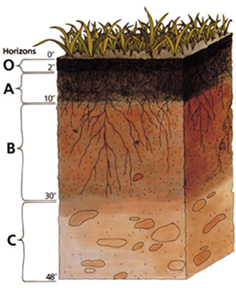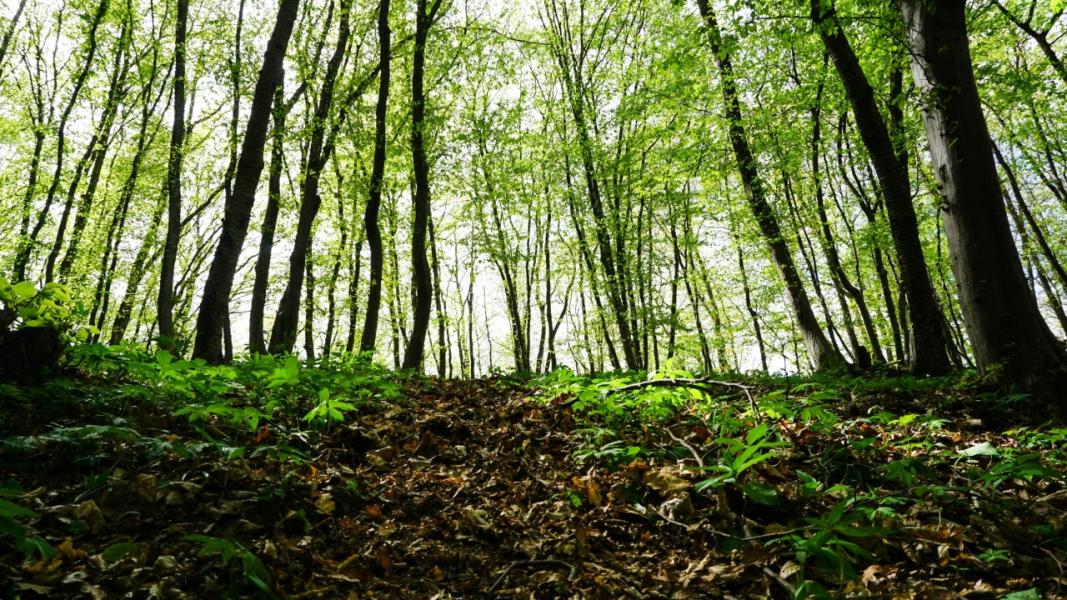What is a forest soil ?
A forest soil is a set of layers that overlap on what is called a « bedrock », the geological terrain. These different layers vary in their thickness, their color, their constitution and reveal by their observation and analysis, not only the history of the constitution of the soil but also its nature, in order to determine the most suitable tree species.
The morphology of forest soils
When we observe the forest floor, of course there is humus (we will take a closer look in a future article). This is what is most quickly observable. But here, we want describe what's below, which constitutes both the anchoring of trees, but also their pantry and their water tank : the soil, made up of layers, « mineral » horizons located above the bedrock.
The soil is constituted of several horizons, composed mainly of three elements, a bit like a cake. To make a good cake (or cookies), we usually add butter, flour and sugar in varying proportions depending on the consistency, or rather the texture that we want to obtain. After integrating other elements such as eggs, we obtain the final structure of the cake. For the floor it's the same, we are going to find (in ascending order of size of elements), clay, silt and sands, in very variable quantities, mainly resulting from the weathering of the bedrock and the migration of different elements.

Around or between these components, water and air flow. They can be very loose or made up of aggregates, which creates interstices, i.e. micropores ou macropores, where the water will be lodged, wether it comes from infiltration in the ground or rises by capillary action of the water tables present in the ground. This structure also allows aeration of the soil and prospection of tree roots who come to find everything they need.
In the first layers of soil, we will also find organic matter incorporated into mineral horizons, which comes from the transformation of biomass coming directly from the trees.
How does the forest soil are formed
A ground is the meeting of a mineral world, which comes from the decomposition of the bedrock, parenting material with the organic world, which comes from the vegetation that has gradually settled on this material.
To synthesize, soil results from two main factors :
- The weathering of the bedrock, the parent rock, under the effect of the climate, therefore different atmospheric phenomena (precipitation and temperature), but also by the action of vegetation, biological agents which will alter the parent material more or less quickely according to their nature (often by the action of the roots) and degree of acidity.
- Finally, it results from the accumulation and incorporation of organic matter que that we mentioned above : it is incorporated into the mineral strata thanks to the biological and faunistic activity of the soil. Leaves and fallen wood are decomposed, incorporated and stirred into mineral strata by worms, insects and fungi, to release minerals and trace elements that will enrich the soil and nourish the trees.

This training process is very slow, it is the result of several hundreds or thousands of years of combined actions, and continues to live and evolve with the vegetation in place, especially trees and with the continuous influence of climatic factors.

